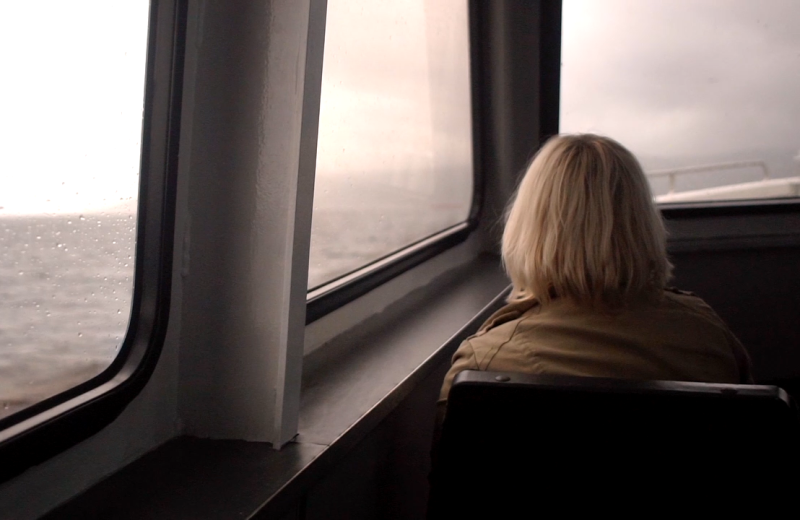Waiting Rooms by Samantha Whates - Part I: Dunoon
/Singer and songwriter Samantha Whates is writing and recording her forthcoming album entirely on location in a series of waiting rooms, some active, some abandoned, trains, buses, hospitals, ferries, care homes. The album will address themes of loss and waiting, of transition and of time passing in transient spaces.
The first recording took place in Dunoon in Scotland, a stunning Victorian ferry waiting room on the inner Hebridean island; the second was overnight in an art deco waiting room at one end of ta tube line, as empty trains rolled in and out; the third took place in Great Ormond Street Hospital with a full band in the public waiting room on a busy Sunday.
Dylan White, who is working with Samantha on the project will be writing a series of posts for the Elsewhere blog from the different locations of the recording sessions. First up, Dunoon on the Isle of Bute:
We're all waiting. Everybody waits. Hospitals. Train stations. Airports. Life itself is a waiting room. In writing and recording her new album entirely in waiting rooms Samantha Whates has tapped into something vital, universal, and as the country creaks and lurches towards who knows what, something urgent and essential.
I set off with Samantha to scope out a former ferry terminal waiting room on a Victorian pier in Dunoon on the Isle of Bute. Gulls swooped and circled as we loitered, ourselves waiting for the harbourmaster to arrive and let us through the padlocked gates. Just as we began to worry we had the wrong day a member of the crew arrived, all hi-vis and friendly bustle. As he led us out over the gangplanks towards the turrets and timbers of this strikingly restored space, Ian regaled us with tales of the great paddle steamers that would ferry Glaswegian holiday makers across the Firth of Clyde from the 1800's right up until the 60's, and tales of the wild Saturday night parties he'd DJ at here in the 80's. Only afterward I learned this town had a US nuclear submarine base around that time, it's location a faintly obscure Harvey Keitel movie, and imagine raucous squaddies quarreling on these boardwalks. With the fall of the Soviet Union the navy moved on, the base closed and along with much of this little town these rooms fell into disrepair and ruin, awaiting its next chapter.
Recently refurbished and completely renovated into its new incarnation as a local community centre and civic attraction, the freshly painted walls sing back at us with reverb and history as Samantha tests the sound of this space.
Ian leaves us to it to check the fittings and the sockets and the practical repercussions of using this place as a recording location. Beyond accessibility and acoustics, the navigation of bespoke bureaucracy and email tennis, one of the challenges facing Samantha is sheer logistics: aligning the calendars and itineraries of geographically disparate musicians and their instruments into remote locations.
"One of the songs we recorded here Sailors has been arranged for Shruti - Lute - Voice. We went on the Ferry from just outside Glasgow with all our recording gear and instruments including a double bass! It felt so in keeping with the songs we choose to record there - something about the journey on the ferry looking out to the water and seeing the pier appearing in the distance. Knowing it was the first recording - I really got into the feeling of the start of the journey. Where all these songs came from. Something about putting the songs back to the source of where they were written - the sentiment and emotions felt through the subject of these songs feels so much clearer when you're on your way to these rooms to go back to that feeling and record them...."
I'm researching and drawing these buildings as part of my involvement in this project, but right now I just loiter and listen, looking out at the circling gulls over the grey waters beyond as the lilting sound of Samantha's guitar and voice stirs life and warmth back to these old rooms, summoning the ghosts of holidays, labourers, sailors and fisherman who've watched these same waters from this spot for the past hundred and fifty years or more, waiting for a bite, a sign, a passing moment.
My reverie is curtailed by Ian's sudden return. "I'm sorry to cut you off I gotta deal with that boat."
And we are hustled back out into the world as he runs to greet the next ferry's arrival. This is a port and he's on shift.
Time and tide wait for no one.
Watch a film about Waiting Rooms from Julius Beltrame, a filmmaker and photographer with an eye for place, architecture and the arts:
We are looking forward to more blogs from Dylan as the project progresses. In the meantime, if you would like to support Samantha as she goes along you can make a pledge in return for different goodies via her pledgemusic page.









